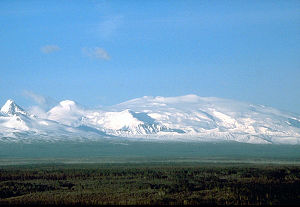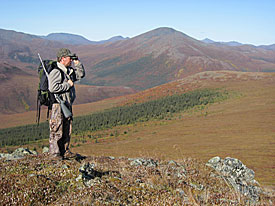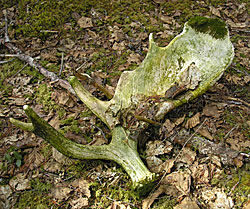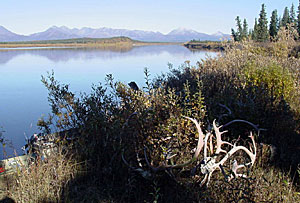 Image via Wikipedia
Image via Wikipedia
In summer 2010, the Alaska Region of the National Park Service, through its Abandoned Mine Lands program, initiated the process of physically closing dangerous mines at Radovan Gulch, located in Wrangell-St. Before personnel could begin sealing adits, they had to comply with the National Historic Preservation Act and determine if the properties were eligible for listing in the National Register of Historic Places. After fieldwork and archival research, an interdisciplinary team determined that the camps, prospects, artifacts, roads and trails at Radovan Gulch maintained historical integrity and were historically significant on a local level. But the story went far beyond compliance; the examination of the site revealed a remarkable time capsule, preserving the life and work of the enduring copper prospector, Martin Radovan.
Martin gained notoriety as a prospector when he laid claim to the Binocular Prospect, a copper outcrop above the greenstone-limestone contact high on the face of a cliff overlooking a glacial cirque. Martin was supported in his endeavor by his wife, Augusta Louise Iverson. Although he never found his "copper mountain," the real treasure uncovered at Radovan Gulch was Martin's uniquely preserved properties and the history they can convey to visitors about an important way of life in the Wrangell Mountains.
Due to the research efforts of NPS cultural resources personnel, the Alaska Miners Association will be inducting Martin Radovan into the Alaska Mining Hall of Fame during its Annual Convention & Trade Show at the Sheraton Anchorage Hotel on Thursday, November 10. The "History Night" festivities begin at 7pm, with Historian Katherine Ringsmuth giving a presentation about the significance of Martin's 46 year history in Radovan Gulch. Also in attendance will be several members of Martin's family from California. The induction ceremony is free and open to the public.

 Game animals are most commonly active in the low light of early morning and late evening. Quality optics in the form of binoculars and spotting scopes are essential for the hunter to see into the shadows and pick out a deer or a moose from alder or willow branches. In more open country such as tundra and mountain meadows, optics are useful to find game before it sees you.
Game animals are most commonly active in the low light of early morning and late evening. Quality optics in the form of binoculars and spotting scopes are essential for the hunter to see into the shadows and pick out a deer or a moose from alder or willow branches. In more open country such as tundra and mountain meadows, optics are useful to find game before it sees you.
 Securing the services of a guide might seem expensive, but the chances of a successful and enjoyable hunt are higher. Hunters who lack precise knowledge of game distribution, access points, and Alaska geography, yet attempt to put together hunts themselves may face frustration, danger, and disappointment. For example, only a relatively small proportion of the out-of-state hunters who stay on the road system to save money will successfully harvest a moose.
Securing the services of a guide might seem expensive, but the chances of a successful and enjoyable hunt are higher. Hunters who lack precise knowledge of game distribution, access points, and Alaska geography, yet attempt to put together hunts themselves may face frustration, danger, and disappointment. For example, only a relatively small proportion of the out-of-state hunters who stay on the road system to save money will successfully harvest a moose. Most Alaska hunting seasons begin in August and September and end by October. Seasons in some areas continue into the winter months. In locations where certain animal populations are large enough and local subsistence needs are being met, hunting for some species may be permitted all year. Bears may be taken in either fall or spring in some locations.
Most Alaska hunting seasons begin in August and September and end by October. Seasons in some areas continue into the winter months. In locations where certain animal populations are large enough and local subsistence needs are being met, hunting for some species may be permitted all year. Bears may be taken in either fall or spring in some locations.